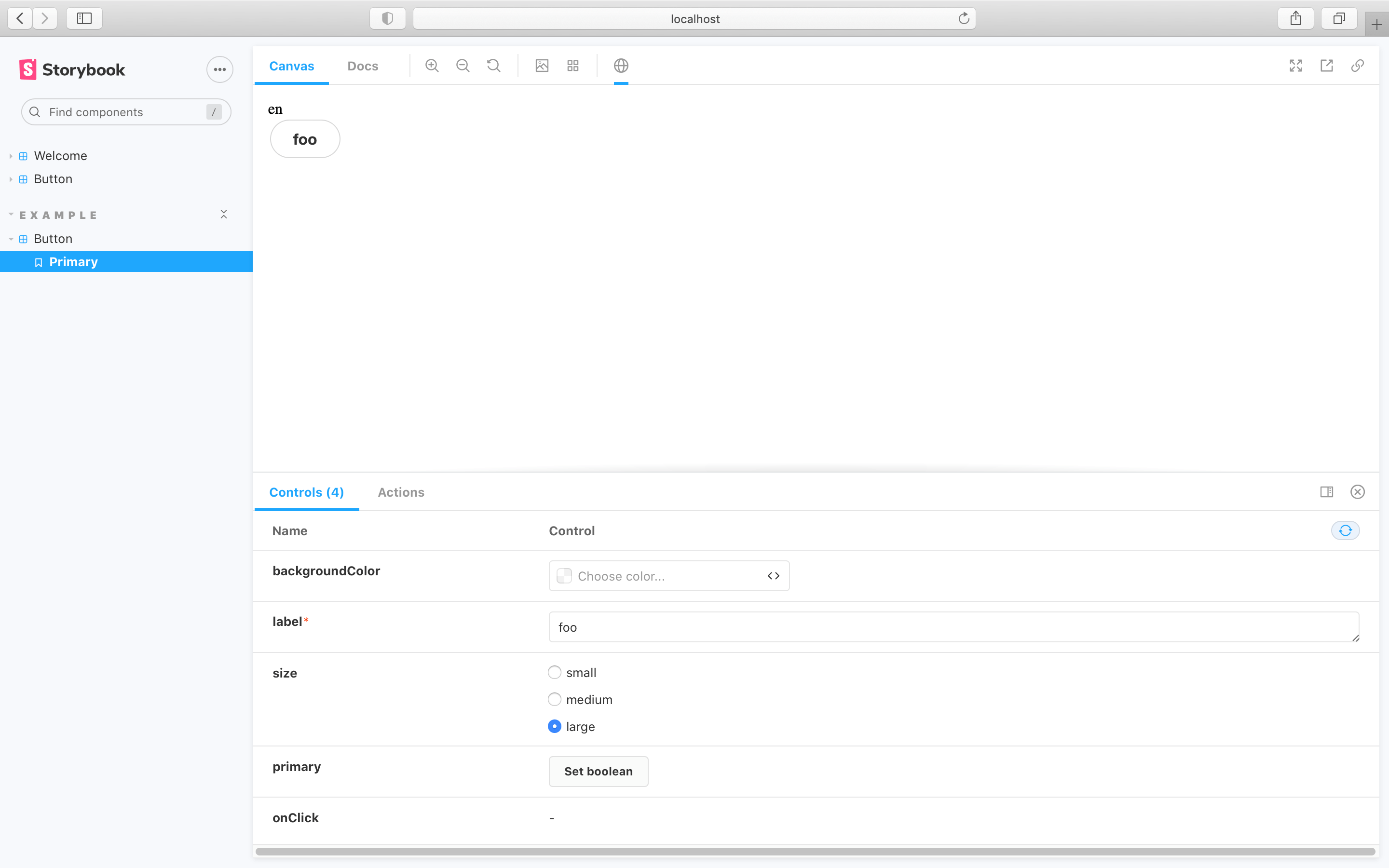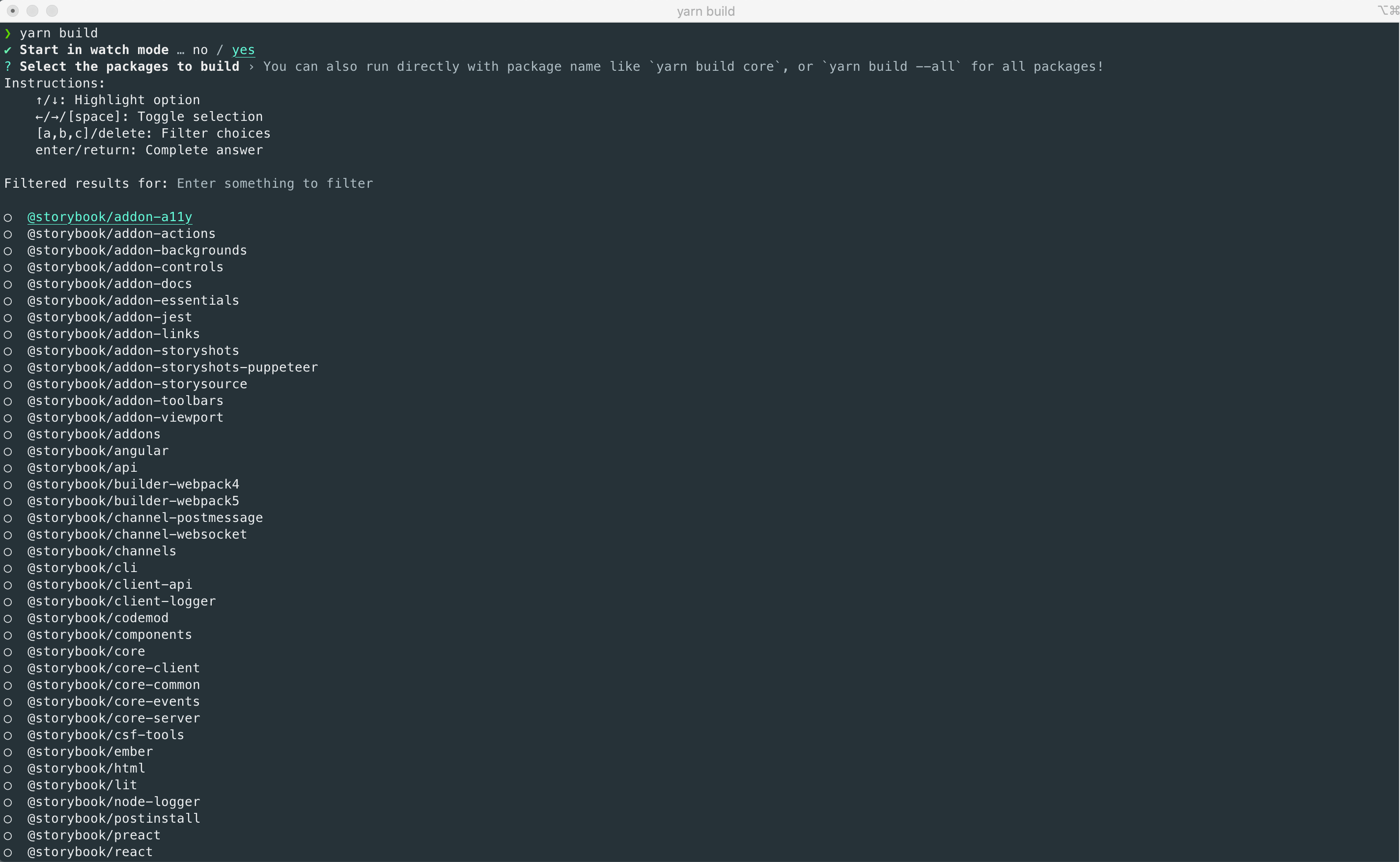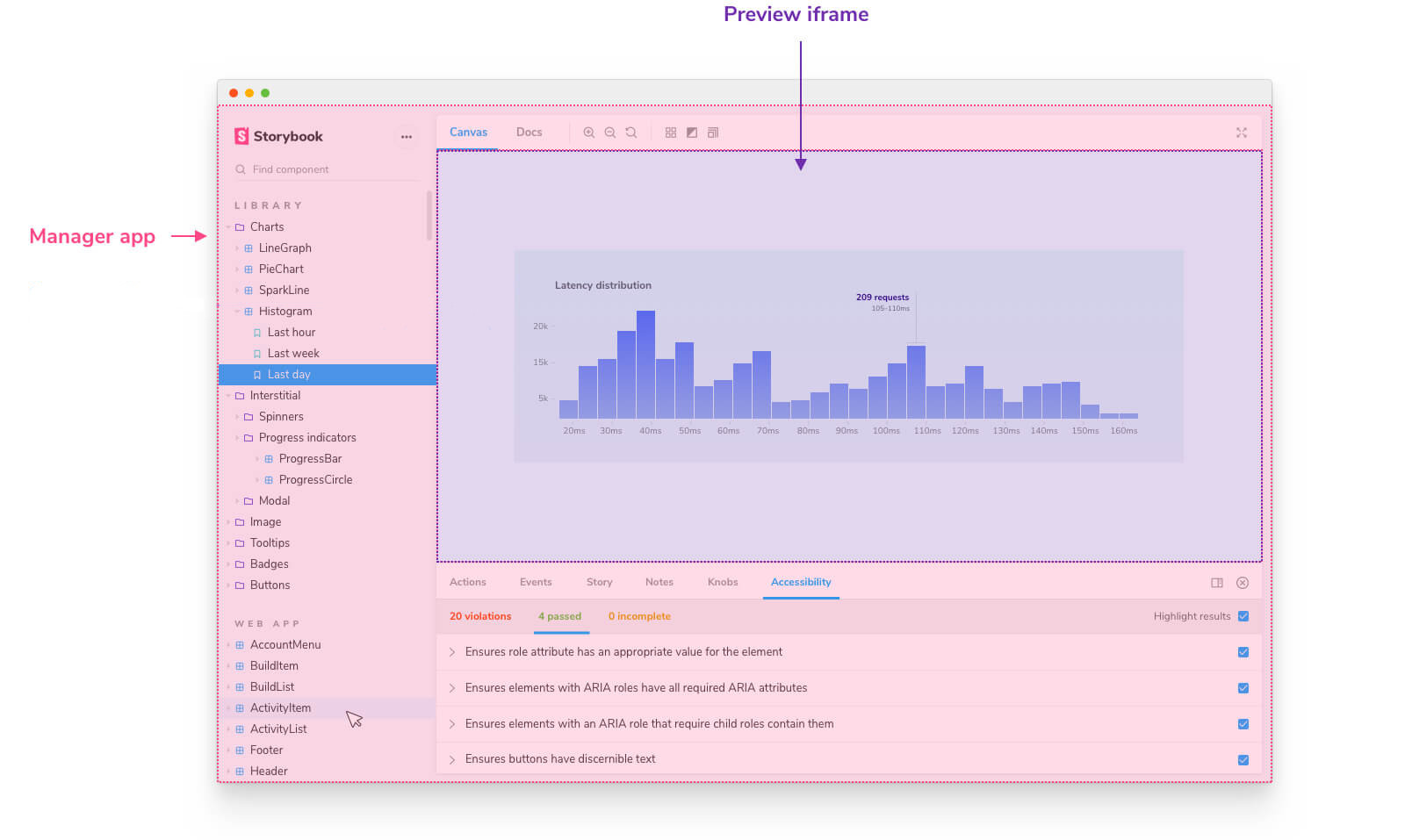Contribute a new feature or bug fix to Storybook's monorepo. This page outlines how to get your environment set up to contribute code.
Initial setup
First fork the Storybook repository then clone and build your fork locally. Run the following commands:
Run tests & examples
Once you've completed the initial setup, you should have a fully functional version of Storybook built on your local machine. Before making any code changes, it's helpful to verify that everything is working as it should. More specifically, the test suite and examples.
Run the following command to execute the tests:
Once the tests finish, check if the examples are working with the following commands:
If everything is working as it should, you should see the example/cra-ts-essentials Storybook running.

Start developing
Now that you've verified your setup, it's time to jump into code. The simplest way to do this is to run one of the examples in one terminal window and the interactive build process in a separate terminal.
Assuming you're still running the examples/cra-ts-essentials from the previous step, open a new terminal and navigate to the root of the Storybook monorepo. Then, create a new branch with the following command:
Run the build process with:
When asked if you want to start the build in watch mode, answer yes to develop in interactive mode. Afterward, choose which packages you want to build. For example, if you're going to work on a feature for @storybook/addon-docs, you might want to select @storybook/addon-docs and @storybook/components.

If the work you'll be doing affects the Preview (the innermost Storybook iframe, where the stories are displayed), it will automatically refresh one to two seconds after you save.
Otherwise, if it affects the Manager (the outermost Storybook iframe where the addons are displayed), you'll need to refresh manually after saving.

Check your work
When you're done coding, add documentation and tests as appropriate. That simplifies the PR review process, which means your code will get merged faster.
Add stories
Adding a story or set of stories to our suite of example apps helps you test your work.
If you're modifying part of Storybook's core, or one of the essential addons, there's probably an existing set of stories in the official-storybook that documents how the feature is supposed to work. Add your stories there.
If you're modifying something related to a specific framework, the framework will have its own examples in the monorepo. For instance, examples/vue-kitchen-sink is a natural place to add stories for @storybook/vue while examples/angular-cli is the place for @storybook/angular.
Add tests
Unit tests ensure that Storybook doesn't break accidentally. If your code can regress in non-obvious ways, include unit tests with your PR. Use the following naming convention:
Submit a pull request
Before submitting your contribution, run the test suite one last time with:
jest as part of the testing suite, if you notice that the snapshot tests fail you can re-run and update them with yarn test -u.Doing this prevents last-minute bugs and is also a great way to get your contribution merged faster once you submit your pull request. Failing to do so will lead to one of the maintainers mark the pull request with the Work in Progress label until all tests pass.
Target next branch
Once the test suite finishes, it's time to commit, push and open a pull request against Storybook's next (default) branch. This branch is where all active development happens and is associated with the latest prerelease version (e.g., 6.3.0-alpha.25).
If your contribution focuses on a bugfix and you want it featured in the next stable release, mention it in the pull request description. We'll try to patch it in if it appears to be non-disruptive and fixes a critical bug.
Useful resources when working with forks
How to work with reproductions
We encourage bug reports to include reproductions. In the same way that it's possible to develop interactively against example projects in the monorepo, it's also possible to develop against a reproduction repository.
To do so, run the following command in the root of the monorepo:
This command creates a project ../storybook-repros/your-project, and automatically links it to your local Storybook code. After connecting it, you should be able to run Storybook and develop as mentioned above.
If you already have a reproduction on your local machine, you can similarly link it to your monorepo dev setup with the --local flag:
Troubleshooting
`yarn dev` watches everything but is resource-intensive
It's troublesome to know which packages you're going to change ahead of time, and watching all of them can be highly demanding, even on modern machines. If you're working on a powerful enough machine, you can use yarn dev instead of yarn build.
